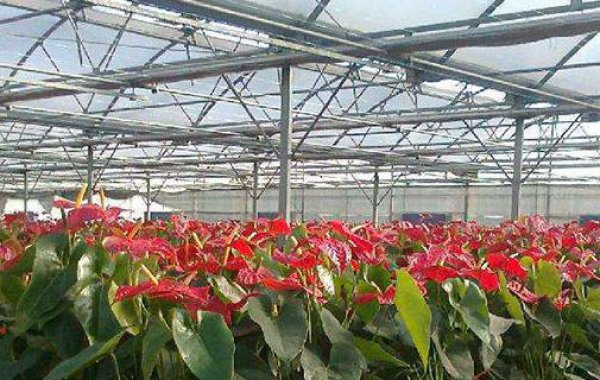How to control the diseases of Zingiberaceae flowers
The main diseases of Zingiberaceae flowers are brown spot, anthracnose and leaf spot.
Zingiberaceae is a family of monocotyledons Zingiberaceae. There are about 47 genera and 700 species, mainly distributed in the tropics. There are about 120 species belonging to 17 genera in China, mainly distributed in the south. Zingiberaceae is a perennial herb, usually fragrant, with short stems, creeping or massive rhizomes, leaf sheaths at the base of leaves; flowers bisexual, bilaterally symmetrical, petals 3, proximally connate into tubes; fruit is a capsule, seeds often have aril. Many species of undergraduate plants are important seasonings and medicinal plants. Important members of the undergraduate course are ginger, Amomum villosum, turmeric, turmeric, cardamom and alpinia officinalis.
1. Brown spot
The disease can be seen on the leaves of late cardamom, Yizhi, round-petal ginger and so on. The disease spot on the leaf is nearly round, irregular or strip-shaped, brown or grayish brown, the edge is dark brown, the disease spot often appears from the leaf tip or leaf edge, and there are many small black spots above. Lack of shade and neglect of management are easy to develop.
Control method: 1000 times solution of methyl topiramate can be sprayed for prevention and control.
2. Anthrax
Harmful turmeric flowers, spring Amomum, red cardamom stems and leaves, etc., mostly occur on adult plants, disease spots mostly start from the leaf tip or leaf edge, initially dark green water stains, then turn grayish white, and then become grayish brown, moire-like, dark brown edge, middle withered white. When the humidity is high, there are many small black spots on the disease spot. The disease mostly occurs in autumn and winter, where the soil is barren, the basic fertilizer is insufficient, the nitrogen is too much, the disease is serious in the land with poor shade, and the disease is beneficial to the spread of rainy and high humidity.
Control methods: 50% carbendazim wettable powder 500 times, 65% Dysen zinc 600-800 times, or 75% chlorothalonil 800 times can be sprayed.
3. Leaf spot
The disease occurs on red silk ginger flower, alpinia officinalis, closed sheath ginger, spring Amomum and so on. It mainly occurs in leaves and can also harm leaf sheaths. In the early stage of the disease, there are small faded green spots on Amomum villosum, which gradually expand into round or irregular waterlogged spots with inconspicuous edges, while the diseased leaves of closed-sheathed ginger are irregular, gray-green in the center, with obvious brown necrotic lines on the edges, and when the humidity is high, there is a gray-green mildew layer in the center of the disease spot. On alpinia officinarum, the damaged leaves appear oval or long oval disease spots, brown, gradually expand into irregular shape, the center is grayish brown or brown, the edge is brown, there are concentric rings, and there are a large number of black spots. The disease can occur all the year round, and the two peak periods are from September to October and March of the following year. During the peak period of the disease, a large number of leaves can be withered. Where the planting land with poor management, poor ventilation, over-dense planting, stagnant water, barren soil, insufficient shade and poor plant growth is seriously harmful, the disease and disability is the source of the first infection of the disease.
Prevention and treatment methods: at the time of onset, 75% chlorothalonil wettable powder 1000 times liquid plus 70% methyl thiophanate wettable powder 1000 times liquid, or 50% Shu Keling wettable powder 2000 times liquid spray control, once every 7-10 days, 2-3 times in a row.
Related
- What if the leaves of potted flowers turn yellow?
- Florescence Control of several Flowers
- Anti-freezing technology and post-freezing nursing technology of flowers
- What is the classification of flowers? What are the common methods of flower classification?
- Prevention and control of alkali and acid damage of flowers in courtyard
- Technology of Anti-freezing and restoring growth of Flower seedlings in greenhouse and greenhouse
- How does flower fertilization not hurt the root? Fertilization technology of flowers
- Key points of disinfection in flower greenhouse
- Several pesticides that are banned or used cautiously in flowers
- How to fertilize the flowers that watch the leaves?



